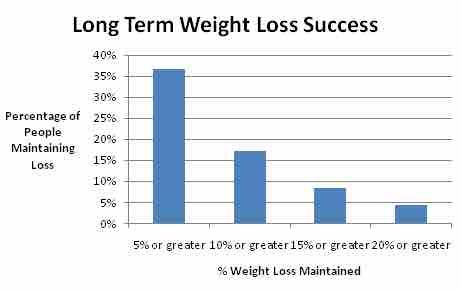
Teenagers often face challenges from their relationship with food. The Diet for Teenagers Only helps teens design a healthy lifestyle. This book has fun, inspirational, and healthy lifestyle suggestions for teens. Although improving your body's size and shape is a worthwhile goal, it is equally important to have a positive attitude about your body. Learning to accept and love your body will help you achieve this goal for life.
Eat three meals a day and make sure you include healthy snacks in between. Your teenager's energy needs are increasing. Sugary snacks can increase hunger. A balanced diet includes three small meals each day as well as healthy snacks. Reduce salt and sugar, and include vegetables and fruits as side dishes. Your teen should be happy with the food they eat. If you are concerned about your teen’s health, it is important to set up a healthy diet and encourage him to follow it.

Most teenagers require two to three servings of fruits and three to five servings of meat a day. One serving of dairy products or low fat milk is considered a serving. You can reduce the intake of high-fat desserts or fried food for your teens. This will not only help them to maintain a healthy body weight but also prevent them from getting heart disease. An example 3000-calorie menu can help you plan healthy snacks. This tool allows you to calculate how many calories your teen eats and how many they need.
Healthy diets for teens are full of healthy foods that will help you remain healthy throughout your teenager's growing period. A good balance of fruits, vegetables, whole grains, no-fat or low-fat milk products, nuts, and fish can help you stay healthy while growing. Balanced diets will prevent you from getting any health issues. It will provide your teen with the nutrition and energy they need to grow strong.
A teenager's diet should contain a wide range nutrients such as carbohydrates, protein, fat, vitamins, and other nutrients. High water intake is important for teenagers as they are more likely than adults to feel thirsty. Therefore, a healthy diet should be balanced with fluids and foods that will keep the teen hydrated. Teens should consume plenty of water and stay away from alcohol due to their high fat content.

High levels of iron and zinc are important for healthy eating habits in teenagers. This mineral is needed to build red blood vessels, which carry oxygen around the bodies. Iron-rich foods should be a part of a teenager's diet. Lean beef, spinach and other sources of iron are excellent options. For normal growth, the first is vital. The latter is richer in protein than the former. These nutrients must be provided in adequate quantities. These nutrients should also include a variety of vegetables, fruits, as well as nuts.
FAQ
What is the difference among a virus or a bacterium and what are their differences?
A virus is a microscopic organism that cannot reproduce outside its host cell. A bacterium (or single-celled organism) reproduces by splitting itself into two. Viruses have a very small size (about 20 nanometers), while bacteria is larger (up to one micron).
Viruses are usually spread through contact with infected bodily fluids, including saliva, urine, semen, vaginal secretions, pus, and feces. Bacteria can easily be spread from direct contact to contaminated surfaces and objects.
Viruses may enter the body through cuts, scrapes. bites, or any other break in the skin. They can also penetrate the skin through the eyes, nose or mouth.
Bacteria can be introduced to our bodies by cuts, scrapes or burns. They may also come into our bodies through food, water, air, soil, dust, or animals.
Both bacteria and viruses can cause illness. Viruses cannot multiply in their host cells. They can only infect living cells and cause illness.
Bacteria can grow in their hosts and cause disease. They can spread to other parts of our bodies. That's why we need antibiotics to kill them.
Increase immunity with herbs or supplements
Herbs and natural remedies can be used to boost immune function. You can use ginger, garlic, echinacea oregano oil and vitamin C as examples.
These herbal remedies shouldn't be considered a replacement for medical treatment. These herbal remedies can cause nausea, vomiting, stomach cramps or dizziness.
What can I do to lower my blood pressure?
First, you must determine what is causing high blood pressure. Next, you must determine the cause and take steps to decrease it. This could include eating less salt, losing weight if necessary, taking medication, etc.
Make sure you're getting enough exercise. Walking is a great alternative if you don't have the time or energy to exercise regularly.
Consider joining a gym if your current exercise regimen is not satisfying you. You will probably join a gym where you can meet other people with similar goals. It's much easier to follow a routine if someone is with you at the gym.
What's the best diet?
The best diet for you depends on several factors, like your age, gender, weight, health conditions, and lifestyle habits. It is also important to think about how much energy you use during exercise and whether you like low-calorie foods.
Intermittent Fasting is an alternative to traditional fasting if you are looking to lose weight. Intermittent Fasting means that you eat only specific meals throughout your day and not three large meals. This might be better for you than traditional diets, which have daily calorie counts.
Some studies suggest that intermittent fasting may improve insulin sensitivity and reduce inflammation, which can lead to improved blood sugar levels and reduced risk of diabetes. Research also shows that intermittent fasting may increase fat loss and improve overall physique.
What is the best way to live a healthy lifestyle?
Healthy lifestyles include eating healthy food, regular exercise, good sleep, and avoiding stress. If you follow these guidelines, you will be able to lead a long and healthy life.
You can start by making small changes in your diet and exercise routine. You can lose weight by walking 30 minutes each day if you are looking to lose weight. For more activity, you can try swimming or dancing. A Fitbit or Strava online program that tracks your activity can be joined.
What are the ten best foods to eat in America?
These are the 10 best foods you can eat:
-
Avocados
-
Berries
-
Broccoli
-
Cauliflower
-
Eggs
-
Fish
-
Grains
-
Nuts
-
Oats
-
Salmon
Statistics
- WHO recommends reducing saturated fats to less than 10% of total energy intake; reducing trans-fats to less than 1% of total energy intake; and replacing both saturated fats and trans-fats to unsaturated fats. (who.int)
- nutrients.[17]X Research sourceWhole grains to try include: 100% whole wheat pasta and bread, brown rice, whole grain oats, farro, millet, quinoa, and barley. (wikihow.com)
- In both adults and children, the intake of free sugars should be reduced to less than 10% of total energy intake. (who.int)
- The Dietary Guidelines for Americans recommend keeping added sugar intake below 10% of your daily calorie intake, while the World Health Organization recommends slashing added sugars to 5% or less of your daily calories for optimal health (59Trusted (healthline.com)
External Links
How To
What does the term "vitamins" mean?
Vitamins are organic compounds naturally found in food. Vitamins aid us in absorbing nutrients from the food we eat. Vitamins cannot be produced by the body. They must be acquired from food.
There are two types: water-soluble and fat-soluble vitamins. Water-soluble vitamins dissolve in water easily. Vitamin C,B1(thiamine), B2 (2riboflavin), and B3 (3niacin), as well as vitamin C,B1, B2 (riboflavin), and B3 (niacin), vitamin B6 (pyridoxine), vitamin folic acid (biotin), pantothenic, and choline are examples. Fat-soluble vitamins can be stored in the liver or in fatty tissue. Some examples include vitamin D and E, K, A and beta carotene.
Vitamins can be classified by their biological activity. There are eight major groups of vitamins:
-
A – Essential for normal growth, and the maintenance of good health.
-
C is important for nerve function and energy production.
-
D - necessary for healthy bones and teeth.
-
E is required for good vision and reproduction.
-
K – Required for healthy nerves & muscles.
-
P - vital for building strong bones andteeth.
-
Q - Aids digestion and iron absorption
-
R – Required for the formation of red blood vessels.
The recommended daily intake (RDA), of vitamins varies with age, gender and physical condition. The U.S. Food and Drug Administration has established the RDA values.
For example, the RDA for vitamin A is 400 micrograms per dayfor adults 19 years or older. Pregnant women require 600 micrograms daily to support fetal development. Children ages 1-8 require 900 micrograms per day. Babies under one-year old require 700 mg per day. Between 9 and 12 years of age, however, this drops to 500 mg per day.
Children between the ages of 1-18 need 800 micrograms per daily for obesity, while children overweight require 1000 micrograms. Children underweight or obese will need 1200 mg per day.
2200 mg of vitamin A per day is required for children aged 4-8 who have been diagnosed by anemia.
2000 micrograms per person is necessary for general health. Breastfeeding or pregnant women require 3000 micrograms per daily due to higher nutrient demands.
1500 micrograms is the recommended daily intake for adults aged 70+, who lose approximately 10% of muscle each year.
Women who have been pregnant or are lactating require more than the RDA. Pregnant women require 4000 micrograms daily during pregnancy, and 2500 micrograms every day after birth. Breastfeeding mothers require 5000 micrograms daily when breast milk production is occurring.